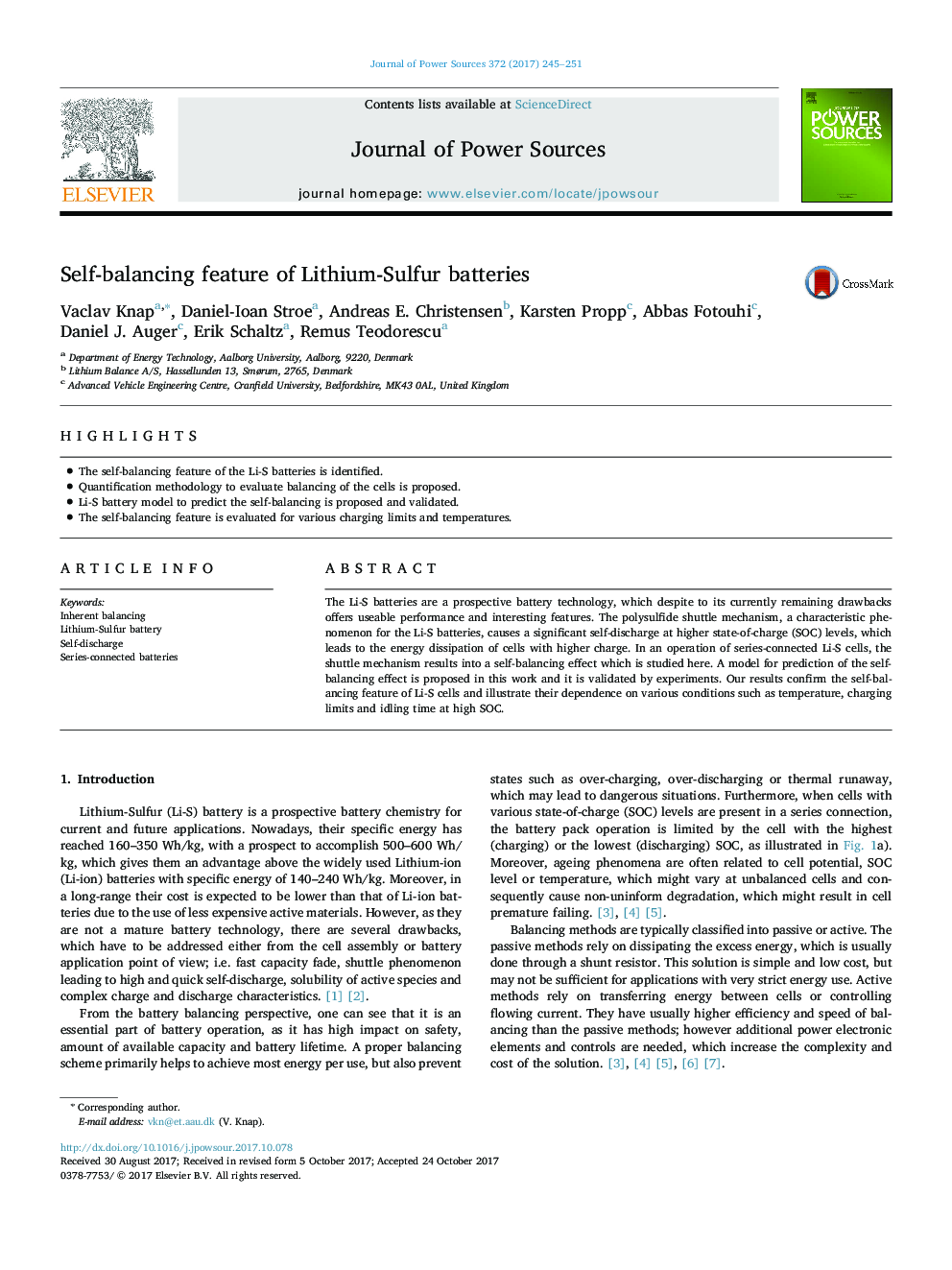| Article ID | Journal | Published Year | Pages | File Type |
|---|---|---|---|---|
| 7726465 | Journal of Power Sources | 2017 | 7 Pages |
Abstract
The Li-S batteries are a prospective battery technology, which despite to its currently remaining drawbacks offers useable performance and interesting features. The polysulfide shuttle mechanism, a characteristic phenomenon for the Li-S batteries, causes a significant self-discharge at higher state-of-charge (SOC) levels, which leads to the energy dissipation of cells with higher charge. In an operation of series-connected Li-S cells, the shuttle mechanism results into a self-balancing effect which is studied here. A model for prediction of the self-balancing effect is proposed in this work and it is validated by experiments. Our results confirm the self-balancing feature of Li-S cells and illustrate their dependence on various conditions such as temperature, charging limits and idling time at high SOC.
Keywords
Related Topics
Physical Sciences and Engineering
Chemistry
Electrochemistry
Authors
Vaclav Knap, Daniel-Ioan Stroe, Andreas E. Christensen, Karsten Propp, Abbas Fotouhi, Daniel J. Auger, Erik Schaltz, Remus Teodorescu,
